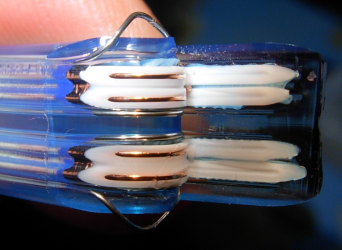Never heard of SATA cable versions. I'm not saying it doesn't exist, but it sounds totally unfamiliar.
Any references to official, non-marketing, standards or tech specs?
There
might be some difference between the very first SATA cables and SATA II cables, but I've repeatedly read non-anecdotal evidence over the years that
SATA II and
SATA III cables are both functionally and marketed-as
interchangeable /
Identical.
Mind you, this all was before SSDs that could exceed HDD R/W speeds were commonplace.
It's not impossible there are "supposed to be" differences between 3.0Gbps SATA cables and 6.0Gbps SATA cables.
If you live in the USA you probably won't find any local stockist for Delock and will have to order them from Europe.
While clearly not stocked in the US (by shipping times)
Amazon US does list quite a few of their products:
To a large amount, without seeding potential responses outside of listed parameters, this was the driving force. A cable is going to be bought with aid of any purchase advice posted. Appreciate you intuiting what was being asked beyond this.
Location of SATA banks on motherboard and four drive mounts inside of case line up with cable routing points to create a short direct line. This is less about clean cable management than strain of bending a cable back over itself multiple times in --> SATA 1/2 on board has less than 2" including connector before passing through to rear chamber. Drive port on first mount sits around 2" beyond with second located around 2" further. Third and fourth are 2.5" only mounts with nearly identical, but more tenable to extend, logical cable routing paths from SATA 3/4.
Understood. Over the years, I've had more than half a dozen SATA cables 'go bad' from being cable managed too tightly.
*Once* I found a bad SATA cable in a Gateway AIO PC, never opened, warranty seals intact.
My boss was upset w/ me that I even took the time to open the unit, but I ended up fixing their AIO w/ a SATA cable out of the partsbin, *and* sold them a new setup.
*shrug*
What I've never seen or tested myself is error rate within transmissions that typically use around half 6gbps bandwidth. Irrespective of SATA standard there are enough reasons to believe construction (AWG/number of grounding wires/etc) don't factor into consumer desktop speed those tests stop at measuring. Correctly you surmised SAS is the place to store critical data if one is being serious.
AFAIK, most SATA Cables are
nothing more than Bonded Dual '
Twinax' 100ohm
RF cable.




'Coaxial Cable' does have limits to its bend radius, but as you've alluded to,
the most-common trouble are the terminations, and how they endure bends/strain.
If I had a bad cable on hand, possibly.
Make a few.
Grab the chintziest looking SATA cable(s) you can find, and give 'em
The Bends 
More specifically I have reasonable doubts. There is a trend towards omitting access to consumers where they might attempt it. Someone more technically knowledgeable with a lifetime of professional experience might be able to comment directly on aspects dealing with error detection and/or correction. Safe to say OS and firmware are growing increasingly capable of handling issues in real time without interrupting ongoing tasks.
@lexluthermiester @Solaris17
I need something that isn't stocked locally or very common elsewhere. The question was if any of the cables I might look at stand out for one reason or another.
Are you looking for such, as a point of personal style or value(s)?
Personally, I do quite enjoy knowing I have and use something 'rare' or of 'uncommonly high quality'.
Or, are you looking to find some genuinely
primo (and uniquely identifiable) SATA cables that you can purchase in quantity, for putting into 'a product'?
Personally, when I've had to seek out and buy Internal cables, I search for Foxconn, Lotes, Molex, 3M, etc.
-the common OEM/ODM brands that supply servers, workstations, and industrial computers.
On that note:
You might want to see if there are any "Industrial Spec" SATA cables, and what exactly they offer over 'bog standard' cables.
Typically, 'industrial computing' -anything, will have better Shielding/EMI mitigations, a wider thermal tolerance, and more implicit durability.






















